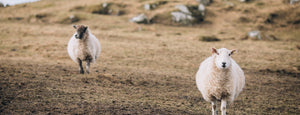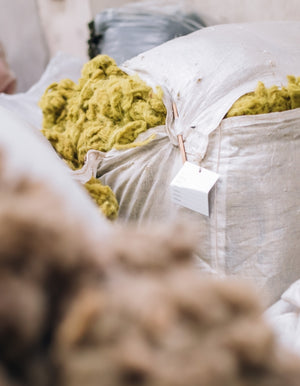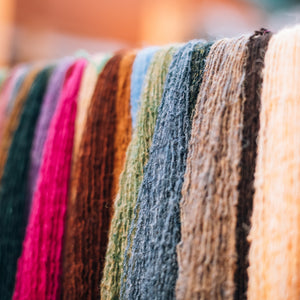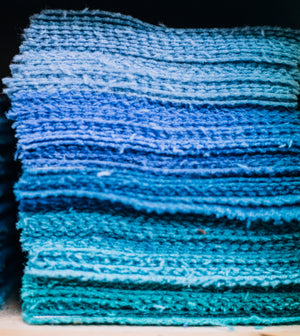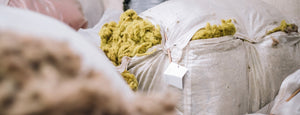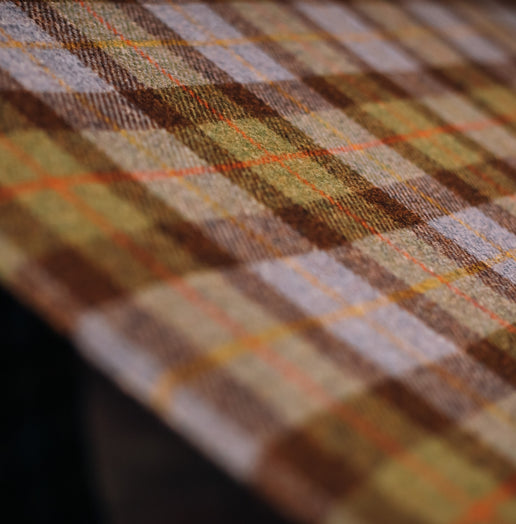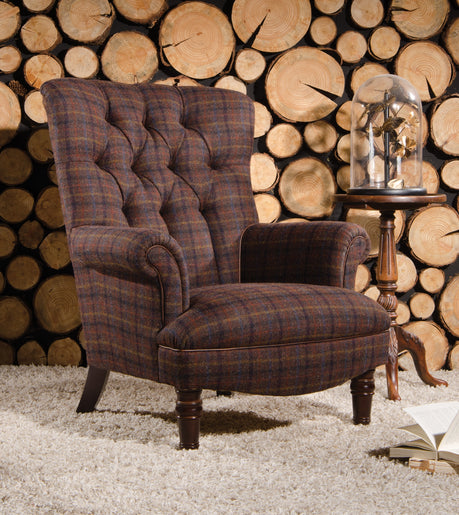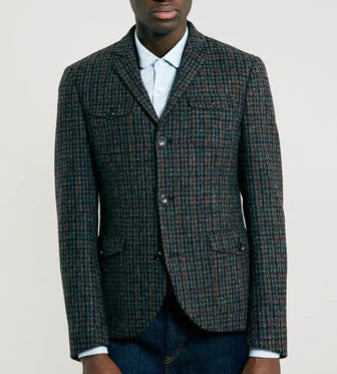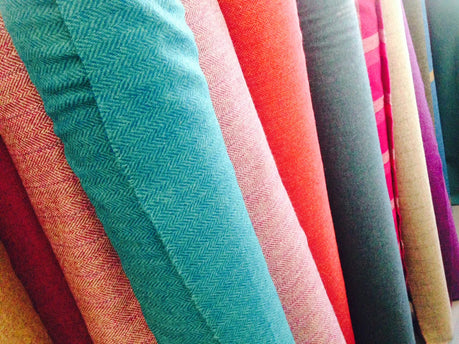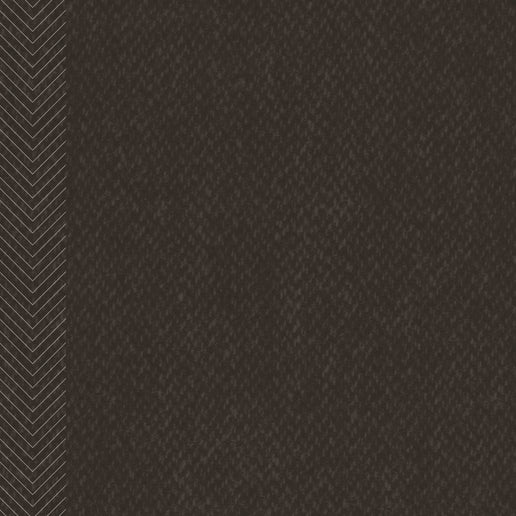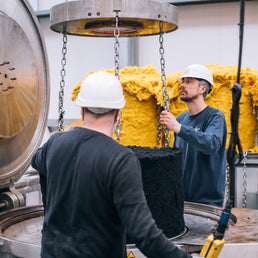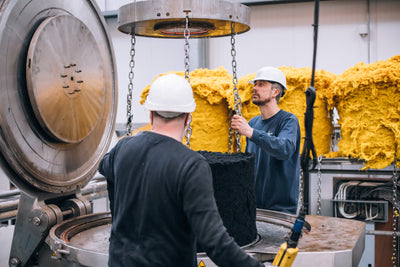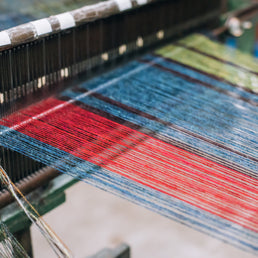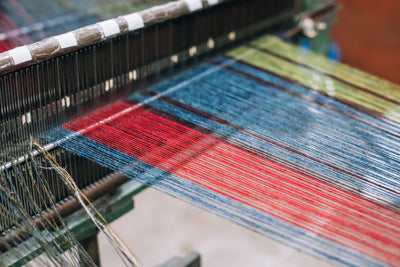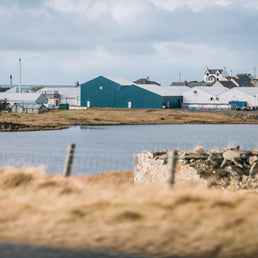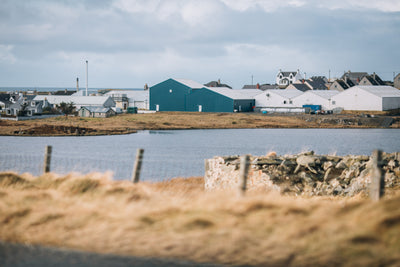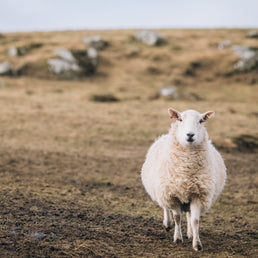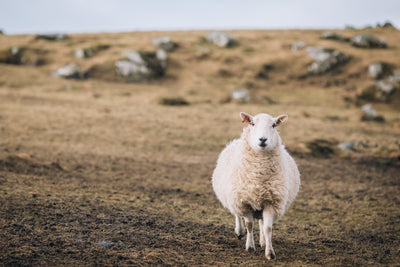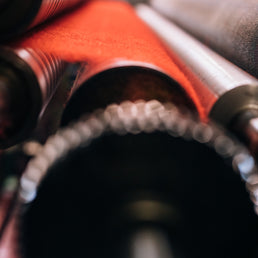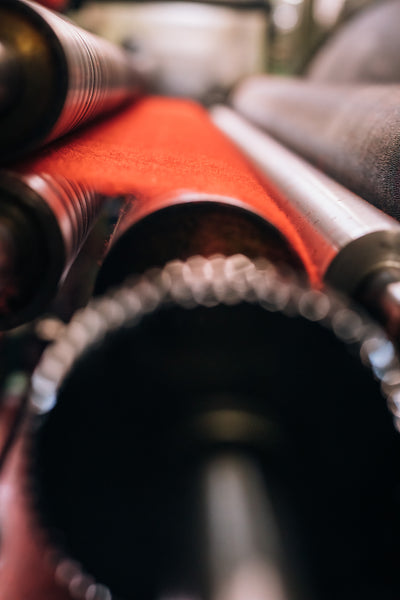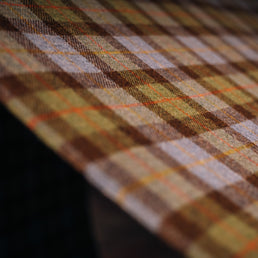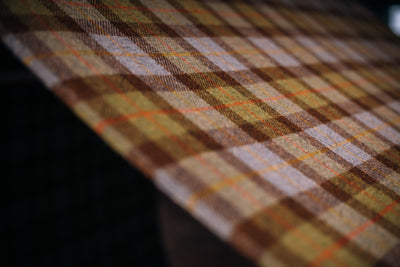Music To The Ears
The final act in an almost orchestral production of a beautiful fabric - the pressing of The Orb stamp onto a piece of Harris Tweed fabric.
Uniquely recognisable, covetable and protected by law, but The Orb is so much more than a trademark. It’s the cultural imprint of a way of life.
For so many islanders who grew up in weaving communities, Harris Tweed is as woven into their own personal heritages as the coloured yarns are bound together from warp and weft.
“The presence of the looms provided the village of my childhood with much of its energy and vitality,” says Lewis writer Donald S Murray in the prelude to his poetry collection, Weaving Songs.
“Each one of these men seemed to possess a Hattersley loom with its own unique set of sounds, its own beat, even its own hours when its clack and rattle were to be heard. And so it was throughout the islands of Lewis and Harris at that time – the same rhythms and music echoed from Rodel in the far south to Port of Ness in the north.”
These sounds – the clack and rattle and the rhythms – are part of the musical fabric of this part of the world and as readily identifiable with the soundscape of the Western Isles as the rush of the Atlantic ocean and the traditional Gaelic psalm singing.
Anyone who has seen Ian Lawson’s beautiful book, From The Land Comes The Cloth, will have been struck by how the colours in the landscape, right up to the heavens, are mirrored so vividly in the colours of the Clo Mor.
That visual intertwining is also captured by poet Donald. “Beneath the mackerel skies of spring, Shonnie’s loom would shoal out herringbone,” he writes.
In the islands, the dramatically shifting skies are a daily reminder of how little the land has been changed by the years.
Similarly, today’s loud song from the looms is the amplification of a 100-year-old cultural sotto voce. Music to the ears.




